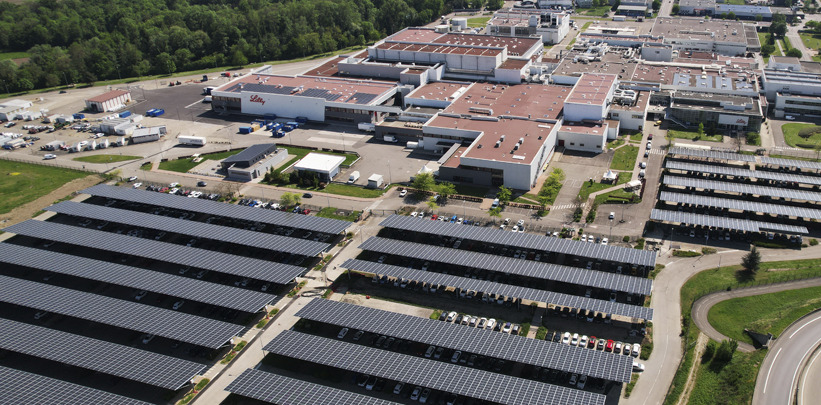Subscriber Benefit
As a subscriber you can listen to articles at work, in the car, or while you work out. Subscribe NowEli Lilly and Co. is about to spend $10 million to install solar panels at its two major Indianapolis corporate campuses.
The Indianapolis-based drugmaker said Monday it will build five large solar structures—three at the Lilly Corporate Center headquarters on the south edge of downtown and two at the sprawling Lilly Technology Center about two miles west.
The solar structures are designed to help generate power for the company and reduce its carbon footprint. They are expected to generate about 3.9 gigawatt hours a year, Lilly officials said, which is enough to power 360 homes.
“Our strategy is to look for ways to minimize our environmental impact across not only the lifecycle of our products, but also our operations,” said Victor Cruz, Lilly’s senior vice president of corporate engineering and global health, safety and environment.
This is just the latest batch of solar arrays to go up at a Lilly facility. The company has solar arrays already in place in France, Italy, Ireland and Puerto Rico.
Installation of solar panels at the corporate headquarters will begin later this year, with those structures expected to power about 4% to 5% of the company’s needs at that campus, Cruz said. At the technical center, installation of the solar panels will begin in late 2024 and provide up to 1% of the electrical needs for that campus, which houses power-hungry manufacturing and research laboratories.
Cruz said he did not have figures for how much electricity those two campuses consume each year.
The pharmaceutical industry uses enormous amounts of energy to maintain critical environments for production in terms of temperature, humidity, room pressurization, cleanliness, and containment. Labs, research facilities, and industrial manufacturing sites can be among the highest energy consumers, doubling or tripling the typical energy consumption of office space, according to Centrica Business Solutions, an energy-consulting firm based in Ballston Lake, New York.
At Lilly’s corporate headquarters, the panels will sit atop parking garages known as PS1 and PS3, which are along Madison Avenue across from the main entrance; and PS3, located along East Street, just south of McCarty Street.
At the tech center, the solar structures will be integrated into a parking canopy, similar to IndyGo’s sweeping roof atop the Julia Carson Transit Center downtown.
The company said it also plans to generate a percentage of the energy at its manufacturing sites around the world, including the new manufacturing site under development in Lebanon.
“This is just the first phase of our project in Indianapolis,” the company said in an email to IBJ. “We’re committed to being a leader in environmental sustainability as we look to reduce our (greenhouse gas) emissions and prioritize energy efficiency to become a more climate-resilient organization.”
Earlier this year, Lilly published its latest environment report, and said it achieved a more than 20% reduction in greenhouse gas emissions between 2020 and 2022 despite significant business growth during the same period.
Please enable JavaScript to view this content.


At this point it’s more shocking when a company doesn’t have at least a plan for solar. The financial justifications are pretty clear, at least for enough panels to handle spring through fall daytime power needs.
The math works out differently on pitched roofs and residential areas, but commercial buildings and parking lots have no good excuses.
Parking lots are prime! Plus it protects vehicle paint from damaging UV rays and heavy rain fall. I wish more companies would invest in solar projects.
This is proof that solar is viable because a for-profit company isn’t going to invest like this if there wasn’t a positive return.